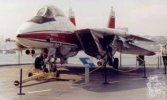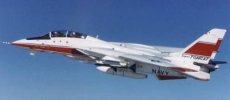

if not, then joe burke (grumman test pilot) and i probably made the only one in tomcat #7 at calverton around '88 or so.
we had a navy chase who felt obligated to report the event.
grounded for a week to make nice with the navy guys.
(joe and i were marines)
#7 is on the deck of the intrepid in new york

